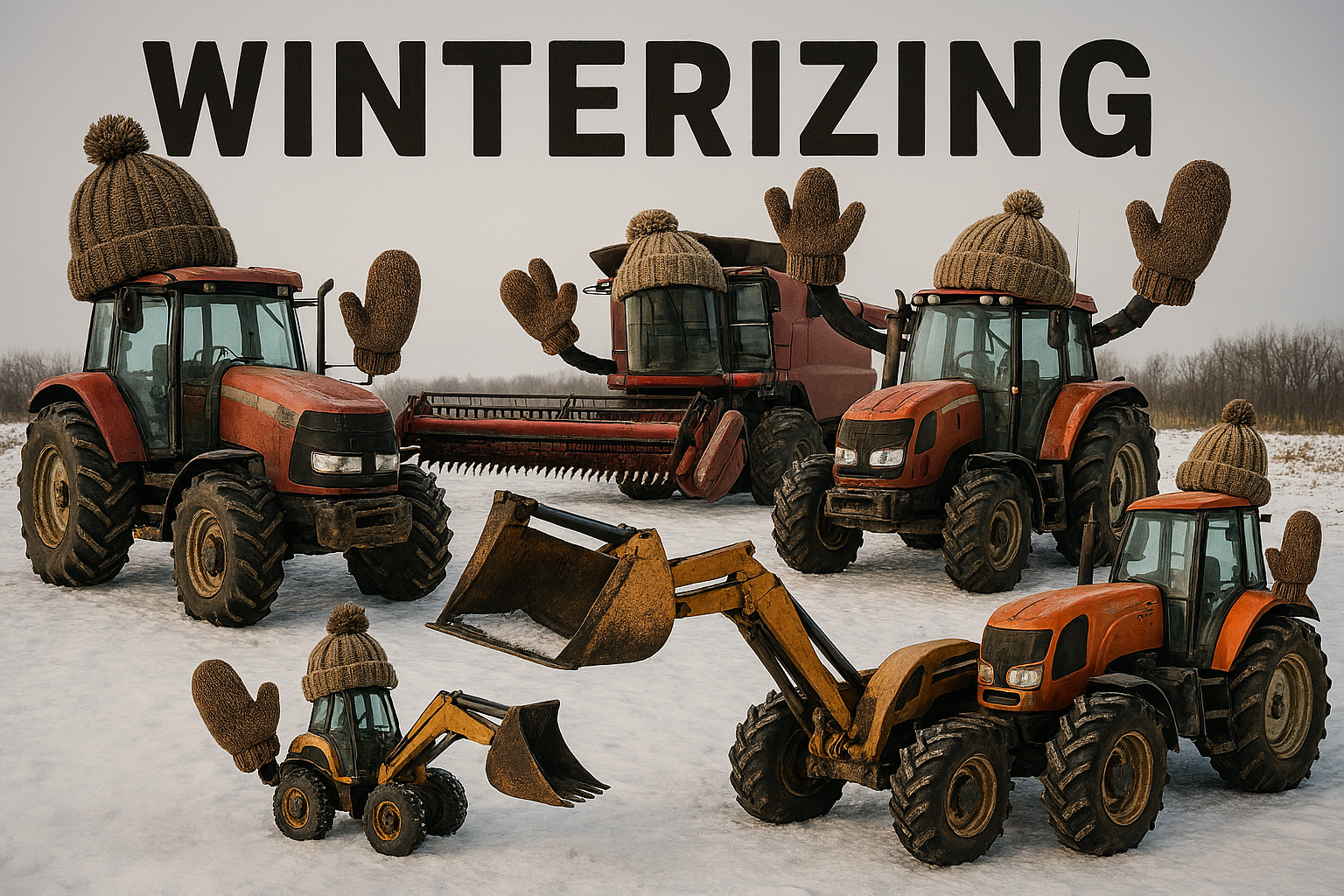Iron Insights
Winterizing Your Harvest Equipment: Preparing for Off-Season Storage
As the harvest season winds down, one of the most important tasks for any farmer is preparing equipment for winter storage. Properly winterizing your harvest machinery not only protects your investment but also ensures that your equipment is ready to go when the next season begins. Neglecting this step can lead to costly repairs, downtime, and frustration in the spring. Here’s a guide to help you winterize your harvest equipment effectively.
1. Clean Your Equipment Thoroughly
Before storing any machinery, start with a comprehensive cleaning. Remove dirt, crop residues, and other debris that can attract pests, cause corrosion, or damage sensitive components over the winter. Pressure wash combines, tractors, headers, and grain carts, paying extra attention to moving parts, bearings, and undercarriages. After washing, let everything dry completely to prevent rust.
2. Inspect and Repair
Winter is the perfect time to inspect your equipment for wear or damage. Look for:
- Worn belts, chains, and hoses
- Damaged tires or tracks
- Leaks in hydraulic systems or fuel lines
- Rust spots or corrosion
Addressing these issues now saves you headaches and downtime in the spring. Replace worn parts and make minor repairs before storage.
3. Change Fluids and Lubricate
Fluids in your machinery can degrade over time or cause damage if left untreated. Consider the following steps:
- Engine oil and filter: Change to clean oil to remove contaminants that can damage your engine over the winter.
- Coolant: Check for proper antifreeze levels to prevent freezing and corrosion.
- Hydraulic fluid: Top up or replace as needed.
- Grease and lubricate: Apply grease to all bearings, joints, and moving parts to prevent rust and keep them moving smoothly.
4. Protect the Fuel System
Fuel left in tanks over winter can degrade and clog engines. To prevent this:
- Fill fuel tanks to prevent condensation.
- Add a fuel stabilizer to avoid gelling or corrosion.
- Run the engine briefly to circulate the treated fuel through the system.
5. Battery Care
Batteries are often neglected during storage, but they need attention to remain functional:
- Remove batteries and store in a cool, dry place.
- Keep them charged or use a battery maintainer to avoid discharge.
- Clean terminals and coat with a light layer of petroleum jelly to prevent corrosion.
6. Store Properly
Where and how you store equipment matters:
- Indoor storage: If possible, keep machinery inside a shed or barn to protect it from moisture, frost, and rodents.
- Outdoor storage: If indoor storage isn’t available, cover machines with waterproof tarps and place them on gravel or pallets to avoid contact with the ground.
- Tires and tracks: If storing outside, slightly inflate tires and relieve track tension to prevent flat spots.
7. Document Maintenance
Keep a record of what you’ve done for winterization. Note any repairs, fluid changes, or parts replacements. This documentation will help streamline spring startup and maintenance scheduling.
8. Spring Readiness
Finally, remember that winterization is just one step toward smooth operation next season. Come spring, check fluid levels, inspect belts, start engines, and ensure all electronics and hydraulics are functioning before heading back to the fields.
Winterizing your harvest equipment is essential to protect your investment and save time and money in the long run. A little effort now—cleaning, inspecting, lubricating, and storing properly—can prevent major headaches and ensure your farm machinery is ready for the next harvest season. Don’t wait until spring to find problems; winterization is the key to a smooth start when the fields are calling again.

